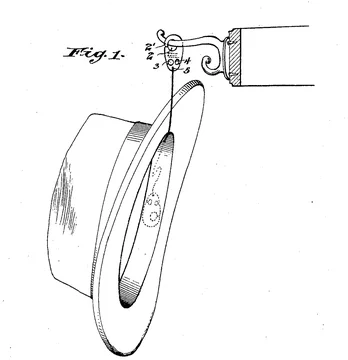
We've talked before about how asserting invalidity based on system prior art (as opposed to written publications, for example) can be tricky, because accused infringers can face all kinds of sometimes-unexpected difficulties with proving up the prior art.
Parties often get into sticky evidentiary questions about exactly what kinds of evidence are sufficient to show that the relevant prior art was on sale before the priority date, and how the prior art functioned—and whether that all of that evidence has authenticity or hearsay issues.
On Friday, Magistrate Judge Burke issued a long oral report and recommendation to grant summary judgment of no invalidity based on a system prior art reference. In the case, the defendants relied on the copyright date of the manual—as parties often try to—to show that the prior art was on sale before the priority date. Judge Burke rejected that argument:
ORAL REPORT AND RECOMMENDATION: The Court, having reviewed the portion of Plaintiffs' motion for partial summary judgment . . . that seeks summary judgment as to Defendant's allegation that some of the asserted claims are invalid based on the Advia2120 product . . . hereby recommends that this portion of the Motion be GRANTED for the following reasons: . . . At trial, Defendant must prove by clear and convincing evidence that there was a definite sale or offer to sell the Advia 2120 by the critical date (which here is January 31, 2007) and that the subject matter of the sale or offer to sell fully anticipated or rendered obvious the claimed invention. . . . the Court agrees with Plaintiffs' second argument: that there is insufficient evidence from which a reasonable fact finder could conclude by clear and convincing evidence that the Advia 2120 that may have been on sale in the U.S. prior to the critical date actually anticipates or renders obvious the asserted claims at issue. It so concludes because . . . the Advia-OG is the only document that facially describes the Advia 2120 and that is said by Defendant to demonstrate how that device was designed and operated prior to the crucial date. . . . But the Advia-OG was printed in 2008, and the simple fact that it lists a 2007 copyright cannot be enough to meet Defendant's burden to demonstrate what the contours of the device actually were as of January 2007 or earlier.
The copyright-date argument was particularly tough here, since the copyright date was 2007, and the critical date was January 31, 2007—leaving only a month where the copyright date might overlap the critical date in a way that shows invalidity. Just another reminder not to put too many eggs in the "copyright date" basket when dealing with system prior art.
Defendants apparently attempted to fix their invalidity case through a last-second third-party declaration that they offered for the first time with their answering summary judgment brief from a developer of the prior art product. The Court found that declaration to be untimely:
Defendant cannot use the belated declaration of Dr. Zelmanovic, the former Principal Scientist at Bayer Corp. who worked on development of the Advia 2120 . . . to fill in the blanks for its invalidity case that are otherwise missing from the properly-developed record. Dr. Zelmanovic was never mentioned in Defendant's initial disclosures or any supplementation thereof . . . and thus Defendant did not timely disclose him in this case as a fact witness with key knowledge . . . . Nor would allowing consideration of the declaration here be harmless under the Pennypack factors. It was no doubt surprising for Plaintiffs to see Dr. Zelmanovic's declaration filed at the eleventh hour, when he was previously only mentioned briefly in Mr. Roche's June 1, 2021 opening report. . . . As a result, there has been no discovery regarding Dr. Zelmanovic's statements, which Defendant now relies on heavily, and there is no time to cure this prejudice, with trial imminent.
If the defendants could scramble and get this third party declaration in the couple of weeks between opening and answering claim construction briefs, I have to think that they might have been able to get it during fact discovery as well, had they focused on it.
If you enjoyed this post, consider subscribing to receive free e-mail updates about new posts.




